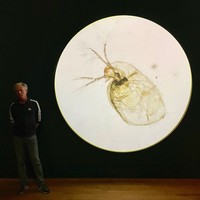eric jorink
Leiden University, Faculty of Humanities, LIAS, Department Member
- Leiden University, Institute for Humanities, Department MemberRoyal Netherlands Academy of Arts and Sciences, History of Science and Scholarship, Faculty Memberadd
- History of Science, History of Philosophy, History of Scholarship, Art History, Scientific Revolution, 17th Century Dutch Republic, and 12 moreCirculation of Knowledge, Cultural History, Social History, Early Modern History, Material Culture Studies, Architectural Theory, History of Ideas, Architecture, Cultural Studies, Archaeology, Geology, and Prehistoric Archaeologyedit
Research Interests:
Research Interests:
In 1679, Hadrianus van Beverland wrote that the original sin by Adam and Eve was intercourse. In the same year, Antoni van Leeuwenhoek’s descriptions of spermatozoa were published. Both publications are believed to have excelled the... more
In 1679, Hadrianus van Beverland wrote that the original sin by Adam and Eve was intercourse. In the same year, Antoni van Leeuwenhoek’s descriptions of spermatozoa were published. Both publications are believed to have excelled the boundaries of decency. However, here I argue that already since 1660 a lively discourse at the Leiden medical faculty existed, focusing on the anatomy and functions of genitals, intercourse and lust. Far from being taboo, these themes were discussed in academic circles and the public realm, and visualized in prints, cabinets, and anatomical handbooks in the vernacular.
Research Interests:
Research Interests:
Research Interests:
Research Interests: Intellectual History, History of Religion, History of Science, Early Modern Europe, History of Astronomy, and 7 moreHistory of Biblical Interpretation, Early Modern Intellectual History, Republic of Letters (Early Modern History), History of Anglo-Dutch Relations, 17th Century Dutch Republic, History of alchemy, and Physico-Theology
Research Interests:
Research Interests:
Research Interests:
Research Interests:
Research Interests:
Research Interests:
Research Interests:
Research Interests:
Research Interests:
Research Interests:
On the basis of a closer study of episodes in Johannes Swammerdam's life (1637–1680), some corrections will be made on the slightly biased and still persistent image of the researcher. Swammerdam is usually portrayed as an isolated and... more
On the basis of a closer study of episodes in Johannes Swammerdam's life (1637–1680), some corrections will be made on the slightly biased and still persistent image of the researcher. Swammerdam is usually portrayed as an isolated and slightly paranoid figure. Here, it will be shown how he self-consciously operated in some overlapping scientific communities. It will be demonstrated that Swammerdam actively was looking for patronage, and that he considered Cosimo III as a likely Maecenas. Moreover, it will be argued that Swammerdam's well known priority dispute with Reinier de Graaf (1671–1673) was not caused by Swammerdam's alleged 'paranoia' , but the result of De Graaf 's ambitions.
Research Interests:
Research Interests:
Research Interests:
Research Interests:
Inaugurele rede uitgesproken bij de aanvaarding van het ambt van bijzonder hoogleraar ‘Verlichting en Religie in historisch en sociaal-cultureel perspectief’, vanwege Teylers Stichting, Leiden, 16 juni 2014.
